On August 26, 2012, Jeremy Humphrey won the Cascade Crest 100 Endurance Run in a time of 18:31:06, beating Jeff Browning’s 2010 time of 18:31:09 and coming gut-wrenchingly close to Rod Bien’s course record of 18:27:52 from 2011. Jeremy and I both direct races in the Idaho Trail Ultra Series, and thinking that people would want to know more about this dark horse, I was thrilled and humbled when he agreed to an interview a few days after his win.
So Jeremy, you seem like a really intentional person; you’ve told me before that you like to put all your eggs in one basket, so to speak, and train to win just one or two races a year. Did you set out to win Cascade Crest?
{No hesitation.}
Yeah, definitely.
Going back a ways, I had some pretty disastrous races, failure snatched from the jaws of victory, just random bizarre stuff; I would come in fit and have a great race, and then something crazy would happen, and it just wouldn’t come together for me.
To what do you attribute your win? Obviously you train hard. What else?
I train fun. I have a lot of principles in my training, like a run isn’t a run unless you get to the top of something. Little things like that keep it fun and keep it from feeling like a regimen.
It goes back to my climbing days and peak baggin’, just fighting my way up to the top in horrible conditions. It’s what some people would call hard training, but for me it’s more like exploration, discovery, out there learning the mountains that surround my home. The physical component was there — I did focus my efforts building up to Cascade Crest — but that too was fun because it was more like chasing PRs on my local training runs. That got me sharp and way more efficient after Big Horn. That’s the sort of stuff I just couldn’t do before Big Horn because I wasn’t healthy.
Also, I prepare well and desire to perform my best. We ultra runners spend lots of time away from loved ones doing our training. My wife Brandi puts up with me being half there during my intense training blocks. On race day, I try to show my appreciation for those sacrifices and bring honor to my family by performing to my limits. This stuff helps to keep fueling the fire when the hurt comes down.
But you know, the big thing is, like…Spirit. The physical component was there, and I was in good shape. But the Spirit…
{Jeremy sighs. And then gets real.}
I was a runner when I was really young. I was fast and into it back then. I got injured and gave it up when I was 11, and I broke my dad’s heart. It’s like all he ever wanted from me was to be a champion runner. He didn’t hold it over my head or anything, but he watched me run, and you could just see it in his eyes. It was like, that’s my son. Running was his vision of what I was to be in this world. The first time he ever saw me run, he saw it.
I carry that with me. Since losing him, I transitioned away from climbing, and I started getting this little twinkle in my eye that I could be a champion again someday. {Jeremy’s dad died in a climbing accident on Mt. McKinley in 2005.} I hatched this long term plan, because I would have to, you know, actually become a runner {he chuckles} and actually go running more than once a month. I figured it would take me three or four years, but I had a couple people teach me some things that were useful. It isn’t too often that I run high mileage, but I kept what I call the Vision and had this long term plan to always get a little bit better and not force it too much.
This was kind of the year I suspected things would start to happen; that’s why I was sort of let down after a couple of disasters {specifically the 2012 Big Horn and Slickrock 100s}, but I figured I was due ‘cause I had that Vision, and I sensed it was all coming together after the last couple years.
But the Spirit part – when I’m low and hurtin’, that’s the shot of adrenaline I always seek, and it carries me through.
What do you want your legacy to be? In running or life?
So many people are driven by the regimen – I have to do this, I have to do that – and not by their gut, or the Vision, the ability to see something you’re going for and go to it. If I can mentor or teach more people to go with their guts and have more fun with running – because I think that’s really the best way to get good – I’d like to share that; and I try, I pass it along to as many people as I can. I’ve got good friends up here who I’ve taken to training with and sharing time with, my wife Brandi being one.
THE PACER
…and my buddy Matt Tock. He paced me for almost 50 miles at Cascade Crest. We had the best time, and he’s coming right along. I just chatter him up, teach him all this stuff, and maybe he’s listening. He’s definitely getting good.
I’d say he’s getting good if he can hang with you for 50 miles at that kind of pace.
That was his farthest run ever…
That’s awesome. So do you think he’s inspired?
I hope so. I’ll know he’s inspired when he gets on UltraSignup and signs up for IMTUF. He ran the McCall Trailrunning Classic, you know. {Jeremy and Brandi direct that phenomenal trail race in McCall in July.} He raced to win – I pumped him up, and I told him he’s going to win and to race like a maniac because Joelle [Vaught’s] coming, and he went out too hard and blew up. {Matt still finished fourth.} It was a great learning experience…but it hurt him, and he thought if I can’t do 40 strong, how can I do 100? But, you know, it’s not the same. I hope he saw the things I did to stay normal through the day and all night; it was totally different than what he thought would happen. I hope he learned, and I hope he gets in that 100.
{Subsequent to this interview, Matt did sign up for the IMTUF 100.}
THE HISTORY
You alluded to the fact that you have been running ultras, or maybe just running in general, for only three or four years?
Yeah, in 2008 and 2009 I was just kinda dabbling. I did Leadville {2008}; that was just me getting bored at work one day, chained to a desk, and I just did it. I just signed up. And I’m like, alright, I need to learn how to run. The race was a couple months later. I ran a couple times and managed to hurt my shin and not be able to run the last month before the race. So it was pretty much an off the couch 100 miler. {He finished in 27:58.} The next spring I did a 50 miler. I didn’t train for it or anything, but I tried to compete, and I’m up there with Anton {he laughs}. I think I got eighth; I cramped horribly. {Jeremy finished the Desert Rats 50 Mile in 9:07.}
The next winter we moved to Idaho, and climbing was pretty far away, so I decided I was going to be a little more consistent, train a little more, and maybe run another race. I got hurt that first winter and felt lousy, and then I did the Mt. Hood PCT 50 with Brandi {his wife as of February 2012}. We finished in 12:17, and that was fun, but I just kept envisioning that I was going do a race someday where I actually would do okay at it. It took a while to get a good result.
Then in 2011, I had enough base built up and I did well at the Robie Creek half marathon, and I ran a fast 50k at Weiser River {he won in 3:27} and did okay at Pocatello {10th in 9:46} and Wild Idaho {won in 9:37}, but I knew that was still just laying the foundation and that this year would I would actually have a chance to see what I was capable of. It took a couple years, and there were some little highlights, but more failures than successes.
And they all led you to where you are right now; it all came together at Cascade Crest…
I didn’t have a chip on my shoulder or anything, but I definitely had baggage. I’d done all this work, and I wanted a real performance I thought I was capable of and representative of what I thought I could do, and I just couldn’t make it happen.
After my calamitous Big Horn debacle {DNF at mile 30, 2012}, I had to just shake that one off and get healthy, which didn’t take that long, actually, and start really good quality training up here now that the mountains were open with long days in the heat and high altitude. The formula for me the last three years has been that I’ve been weak in the early winter and summer, building to a peak in November. {Jeremy and his wife Brandi live in the mountain resort town of McCall, Idaho – elevation 5013’, population ~3000 – which has the highest average snowfall in the state.} It’s hard to be a mountain runner up here half the year.
THE TRAINING
Do you train in miles or hours, and what did your training look like leading up to the race in terms of running, fuel, and strength training?
When it starts getting down to crunch time, seven weeks out to three weeks out, I try to be a little more regimented, eat really quality foods, switch to as much organic as I can take, and make sure I’m eating all the best meat, no junk. When I feel run down, I can feel a huge boost from a pasta or pizza dinner. That balances me out when I’m worn ragged from too many miles or too many hours.
Training wise, I like to peak in volume seven to five weeks out, peak in intensity from five to three, and then it’s just like whatever I feel like doing, maybe go for a couple PRs within that last three weeks. I don’t feel any necessity to run every day.
In those last three weeks, I focus on becoming super confident so that each run feels like I’m putting a nail in the coffin, sealing the deal. I’m building confidence and don’t want to have any setbacks in the last three weeks, so if I don’t feel great, I don’t do anything. When I say setting PRs, for example, I’ve got this two mile mountain that I’ve done a hundred times, and I want to go blow away my PR on that run, and I won’t do it unless I know I’m going to do it. I treat it like a mini race. And after that I might take 2-3 days off. You want to build this little string of successes right at the end, and then you go in feeling like you’re going to succeed. The work is pretty much done there. Instead of trying to cram in more and more miles, more volume, worry about every little detail. Building the Spirit is how I would describe the three weeks before a race.
Find something that drives you really hard, something that tugs at you and doesn’t let you go, even when it hurts. I think with that, humans are pretty much unstoppable.
Weeks seven to five have lots of miles, some that feel like filler miles that I don’t find too inspiring, but I guess they’re important to run a super long distance. Since last November (2011), though, I haven’t run further than 30 miles at all. It’s not about running super long, more about consistency and good health, and some good high quality PR tempo runs, like 6-8 miles uphill as fast as you can go. I attribute the bulk of my gain in fitness and efficiency this year to runs like that.
The other thing, nutritionally…I know a lot of people aren’t into it, but in the last year I got into hunting. It’s kinda hard not to up here. We live in the middle of nowhere, and we’re trying to be as self-sufficient as we can, chopping our own firewood, and trying to do for ourselves, running small businesses, trying to make it living in the mountains. Elk hunting and the health benefits from the natural meat and eating the best quality food possible; mix that with organic vegetables and eggs – all that really seems to have been a real game changer for us.
There’s no reason to feel apologetic about hunting.
That’s me, and I gladly share it. I mean, I don’t feel sorry about it. Harvesting my first elk last year was a memorable and life changing event, and we mourned the loss of that beautiful animal, and each day we’ve grown stronger from it. We’re trying to take care of ourselves up here, and stuff like that has helped.
THE FUEL
When talking about your pacer Matt, you said ‘things I did to stay normal’ referring to how you managed your race. What did that look like? What went right, and what didn’t go so right?
Well, I would say nothing…I didn’t do anything…wrong.
{He chuckles as if he knows how ludicrous this statement possibly sounds when said aloud. But with Jeremy, you really believe it’s possible.}
Nutritionally and pacing wise, I sustained no low point, whatsoever. The time just passed right by with no suffering at all. It was phenomenal in that regard. Calorically, I probably could have had a little more toward the end. But I laid a really good foundation early. You and I were just talking about this at Wild Idaho. {I worked an aid station with Jeremy at the Wild Idaho 50M/50K on August 4th.} I did decide on getting a case of Vespa, got a couple more training runs with it before the race, and then I raced with it; each time I would get to an aid station and feel the slightest bit weary, it pulled me right out and I was totally normal again. I wouldn’t even call those low points; but you know, you sense you’re not all there mentally or you’re not pushing as hard as you could because you’re starting to feel that slightest bit of weariness.
I’ve never had any interaction with Vespa or anything {i.e. NFI and no sponsorship}, but I gave it as scientific of an ultrarunning study as I could – basically eat it and go run – and it certainly did nothing negative to me, and I ran for eighteen and a half hours on pretty hard terrain, and I didn’t have any low points. And [two days later] I’m walking around and feeling fine pretty much. So, it seemed to affect me positively, even if it was just a mind state thing. That was good enough.
But what I didn’t expect was this: I’d always heard that if you eat or drink Vespa, you don’t have to eat as much. It actually increased my appetite, even in the heat. It was a pretty hot day – upper 70’s at least at some points – and my appetite for gel usually isn’t that great, but during the race, it was insatiable. I was eating three gels an hour, like clockwork, and I couldn’t wait to get my next one. It just tasted delicious, and I ate every variety – Hammer, GU, whatever, in every flavor, and it was just great energy all day. I didn’t eat much real food at all.
That is incredible.
Through the night, I drank some Coke, here and there. I’d get half Coke, half water, but that was about it, and I had no desire to eat real food. I was perfectly sustained with what I was getting in the Vespa and gels.
It’s amazing to me that you could run a 100 miler without really any real food.
Yeah, I’d never experienced that either. When I train, I eat sandwiches and Rockbars {homemade energy bars he and Brandi make}; I like to start running with a turkey sandwich in my belly. {Chuckle.} But the race was warm and I suspected I wouldn’t have much of an appetite for real food. I did manage one of Scott McCoubrey’s {Scott Sports} pierogis at mile 47. That might have been the most real food I had.

The Shoes - Post Race; Scott T2 Kinabalu on left and Scott Race Rockers on right. Credit: Brandi Humphrey
THE GEAR
Speaking of Scott, you run in Scott running shoes. Are you are sponsored Scott runner?
I don’t know what to call it. Scott gives me shoes and some other stuff. I promote their brand by wearing it and sharing my experiences on my blog . We put on some races that Scott Sports sponsors {the McCall Trailrunning Classic and the IMTUF 100 that are part of the Scott Sports Idaho Trail Ultra Series}.
{Subsequent to this interview, Jeremy announced in his post-race blog that he will be joining the Scott racing team. Congratulations!}
How did your Scotts work for you in this race?
I’m pretty simple in my requirements for running gear. I don’t like to wear shirts, and I wore black shorts, like I always wear. The week before the race, Scott [McCoubrey] asked me if I wanted any gear. I’d just heard about a new shoe they’d just taken to the Outdoor Retailer show, the T2 Kinabalu (T2K for short).
They describe it as a T2 road shoe platform made into a trail shoe, which is what I’ve been asking for since I’ve known about Scott. Besides the protective qualities of the shoe – the traction and the rock plate and the lightness – I settled on the T2K because it’s built on the T2 last. The T2 is a road racing shoe and the reason most people know about Scott. It’s a phenomenal road racing shoe, at eight-some ounces, it is light and fully protective. If I ever ran a road marathon, that’s what I would most definitely run in.
Scott sent me a prototype of the T2 Kinabalu, and I managed a few training runs in them before the race, and they felt great. It’s a light shoe, in the low to mid nine-ounce range, with a full sole, full protection, great foam, and great cushioning. It just felt great. It’s about the most light 100 mile shoe that I could imagine, considering the current shoe technologies. So, I’m hoping to get my hands on a lot more of those.
And you wore the T2Ks the whole race?
Oh yeah, I didn’t sit down, I don’t think I stopped moving. I soaked them at least 20 times. I put mud up to my shins many, many times; they have these drainage ports, and you can actually see the water squishing out as soon as you fill them. It’s pretty sweet. Besides that, they’re made of light, breathable mesh that dries quickly. The course description said you might get your feet wet two times, but I don’t know – you try running as fast as you can through the night, and I mean…I was blindly stepping into every mud hole and water spot I think was out there. It wasn’t twice, it was more like 20 times, maybe more. The effective shoes were a critical factor in my success.
Also, besides being an ultra rugged mountain race, Cascade Crest actually tests your road running skill on some extended jeep roads. So, I was drawn to the dual nature of the T2 Kinabalu – its road running ability and rugged handling of rock and root for trail. The core of my strategy for the race was to get to those road sections and to run every step of them. And I did.
The Scott T2 Kinabalu is a totally different shoe – light enough that it’s a joy to run in, but protective enough that I don’t think I’m giving away anything I need. I’m going to transition to it for my general running.
THE RACE
So, your friend Matt Tock…he paced you for 50 miles. Was that from mile 50 to the end?
The most a pacer can officially pace is from Hyak at mile 53 to the finish. It was supposed to be 47 miles, but we did some extra running in circles at the end, just for fun. {He laughs, a bit ruefully}.
He jumped in, and I considered that to be the crux of my race. At that point, I didn’t know it but the second place guy was only ten minutes back. We were looking back and could see a ways, but we couldn’t see anyone, so we knew we had a lead. The road miles of the course began in the section after Hyak. You climb seven miles and gain a couple thousand feet, and then you go down seven or eight miles, losing that altitude, and then you do some really technical stuff on the Trail from Hell along this lake, and then you get eight more miles of road. These are forest roads, like really scenic, pretty stuff, but it was night then. But I knew that if I were to run all those roads… I was focusing all my energy of the day on that, and I think from that from those road sections, we turned that lead into a couple hours.
So we were climbing a good steady uphill and getting 10-11 minute miles. I suspected that would build a big gap, and Matt kept pumping me up and staying right on my hip and lighting up the trail. He’d come through with a good story at a low point or just remind me of all the stuff we’d been doing since we’d been training and talk to me about my dad. He didn’t know my dad, but he knows that’s how to get me going. So, he pulled me through that, and we got to the Needles, at the top of that road, and you start these radical ups and downs for these next 10 miles or so. And they’re steep.
Some if it just isn’t runnable – I don’t think it would have made me any faster to try – and it felt like we were just moving slow as Moses, crawling over some of that stuff, but no one gained on us through there. Then you go all the way down to Ben Blessing’s aid station at mile 96, and I was shocked when they’re like, you’re 20 minutes under course record; we couldn’t believe it.
I had fallen down and broken my GPS watch, ripped the band off, and I had been falling down repeatedly in every mud hole and tripping over every rock; we hadn’t even thought about the course record at all, but I thought I might as well start running and go for it. We could pretty much jog it in from there and do it.
So we take off, and it’s going great, and we’re getting maybe seven minute miles. That section’s not that hard, just nice soft dirt ATV track, and then we get like two miles from the finish, right where we’re supposed to come out near some pavement, which I recognized as being the homestretch.
And the markers are gone.
We talked about it, and we kept running.
But the markers are gone.
We discussed going back, and I thought we were going the right direction. We could hear the highway, so we keep going, and we recognize this road and I think this might be it.
We make a left and start going the right direction.
We run for a quarter of a mile, and there are no markers, so we go back to the intersection, and we just keep going down these powerlines. And we’re running fast, now sensing that the whole thing is unraveling. We think we’re about to get passed, so it’s pure adrenaline, middle of the night craziness at that point.
And then we run right into a dead end at a lake.
{He stops; I wait in anticipation for him to continue.}
I mean, we run right up to the lake shore, and we’re like I know this lake! It’s Lake Easton. And I feel we just need to get around it. I’m like I can swim it; we just need to bushwhack around it somehow. But we go back up, and we come back down around another ATV trail, and boom, there’s the shoreline again. And we’re standing there looking at the lake. Eventually we backtrack clear back to the main road again, and there’s Ben.
{This part is pretty hilarious if you know Ben Blessing; but Ben says he was pretty upset at the time, understandably.}
Ben’s like the course got stripped, follow me! He’s screaming. And he, like, paces me with his truck, screaming at me, and Matt, bless his heart, can’t hang on anymore. I’m running six minute miles now, and Ben’s screaming and honking his horn; Shadow {Ben’s dog} is out there running with me, and Ben’s blasting his horn, and I think he’s playing his music super loud. I’ve got a caravan getting me home.
I just punch it just as fast as I can and finish up that couple miles as fast as I can run, and I missed [the course record] by a little over three minutes.
So we managed a couple extra miles in there, but…it was cool because that was like the only real test, the only time the whole day we were hanging on the edge. The rest of it was very much controlled and systematically dialed in, but the end was like pure animal-running-through-the-darkness madness. It was fun. Looking back on it – to keep our cool and not flip out and do something dumb after all that added to the whole experience.
Are you happy with your finish? Do you feel like you want to go back and try again for the course record, or does that even matter to you?
{Jeremy answers confidently.}
Very happy, and no I don’t have any desire for that. I’m not saying I won’t go back and race it again, but we didn’t pay attention to that record all day; we heard some rumblings here and there like we were close, but we didn’t even have a watch that was working. We were just taking care of ourselves and having fun, trying to enjoy the night and be in the mountains and move as fast as we could. My race wasn’t about the record, so I’m not going to get disappointed that I tried to make a last stab effort at it and didn’t make it. Sure I was going to try – it was right there. But that wasn’t the point. I think I drained as much out of it as I could on that day. To me it’s done. Maybe I’ll have an itch to go back and run those mountains again, but it won’t be because I didn’t get the course record.
I love your great attitude. Without even a watch, that’s amazing. You were just running. How wonderful.
I always have a watch, and I’m always glued to it. But that running was way too hard to be looking at your watch anyway. You’re running through the night as hard as you can. I was tripping and falling all over the place.
So, you were doing your best no matter what the watch would have said…
Yeah, doing my best, with the knowledge that I had to keep running all night. I mean you gotta keep it pretty measured. You can’t get too psyched up at any one point and go crazy. It was really hard. I’m really shocked at how hard that race was.
Terrain hard or mentally hard?
It was the easiest mentally holding on of any race I’ve run, even my 50ks. It was physically – with the crux of the race at the end, the most technical stuff in the middle of the night, – so hard to excel on that terrain. Hard to get any kind of rhythm or groove going before I was kicking some unseen rock or trying to go through this trail that had huckleberry bushes growing all over it; all that stuff is normal for us McCall folks, but I don’t always do it all night long. That makes a big difference.
Your Garmin broke mid-race and you had to continue without it. Did that change your race? Did you run it differently that you might have with the device?
I think possibly, yeah. Normally, I’m a GPS watch kind of person. I like to know where I am and what my pace is, but I had to let go of that and just go by feel rather than what some watch was telling me.
Before the race I thought I should be running down the hill from mile 60 under a seven minute pace. But I had a little bit of early stage hamstring cramping feeling – it went away, but I still had my watch there {this was right before it broke}. I looked down, and it said around nine minute pace, and I’m not running as fast as I had hoped. So, soon after my watch broke and I got over that inconsequential superficial stuff, I realized that, you know, nine minute pace anywhere in the mountains in the middle of the night is still pretty good, and I shouldn’t be worried about that sort of thing. I should just be focusing on the big picture, you know, which was taking care of myself.
I love that – I’m not a GPS person – I think people do stress out so much when they see that ‘pace’ section and it doesn’t match up with what’s desired. When you just go to feel, that’s awesome.
IMTUF 100
Speaking of 100 mile races with elevation gains in the low 20k range…tell me what’s coming up for you as a race director.
Ben Blessing and I are putting on a 100 miler called the IMTUF 100 on October 6th. I was running in the woods somewhere a couple of years ago. I like acronyms, and I was thinking of a cool acronym that would symbolize the experience and also make some statement. Like the HURT 100 (Hawaiian Ultra Running Team). I like stuff like that, so I came up with IMTUF: Idaho Mountain Trail Ultra Festival, or IMTUF 100. It makes a statement.
It is, in fact a tough run. When I say IM it’s not me; it’s not the runners. It’s the environment; it’s those mountains out there making the statement, not anything else. It’s you out there, climbing and descending all day with the weather and the altitude and the animals and rocks and roots and overgrown foliage. The wilds of Idaho. You get it all out there. That’s why I live in the mountains; I wanted a course to encapsulate all that.
I worked on the course for a year or two, envisioning the perfect loop with the best running and the most aesthetic line I could possibly put together on all the thousands of miles of trails up here. Then I heard that my buddy Ben Blessing was also looking to do a 100 miler around here. He’s all connected and knows everyone, and he’s an experienced RD, unlike me – well I guess I’ve directed a race now {the McCall Trailrunning Classic} – but this will be the first 100 I’ve directed, so it was a pretty logical decision to join forces and co-RD this thing with Ben. We hatched a plan, and the race is October 6, 2012. Sign up before September 30th.
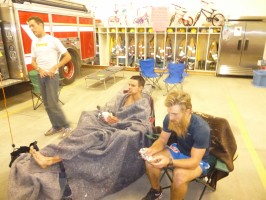
Matt Tock and Jeremy warming up after the race. Ben Blessing pictured to the left. Credit: Brandi Humphrey
Invite people to IMTUF.
The miles of this 100 are the integral core of my training, the best trails I run and train on. I’m eager to share them and get the word out about the great trails and mountains up here around McCall. We also want to show people who haven’t been here how great the town of McCall is to just come and visit. Everyone seems to be happy here; it’s simply a great place to be, summer and winter. We’re hosting the race a little north of town at Burgdorf Hot Springs, and it’s a nice little place, but the town of McCall is still going to be intimately involved in the support and sponsorship. At Burgdorf you can soak in beautiful mineral hot springs before and after the race; that’s pretty hard to beat after finishing up an October hundred. A little touch of class I think people are going to remember.
What races do you have coming up for yourself to run?
I’m not entered in anything, but I don’t think I’m done for the year. I think I’ve got some more work to do. There’s a lot of stuff spinning around. I’ll just leave it at that.
You are fit and ready, and it will be exciting for you to utilize the shape you’re in.
Doesn’t matter if I tell anyone what I’m going to do anyway. I think I crawled up to 86% or so on the UltraSignup rankings {he’s 86.9%}, so I’m still going to be way down on any entrant list, and no one’s going to even notice I’m there.
{Agree to disagree.}
I like that spot. That’s good. [Browning and Bien] are both unbelievable runners; both of them had done tons of running on that course before and done their homework. Just to be in that company…the record doesn’t matter. At least I’m in the mix, and that’s what I was hoping for.
LAST WORDS
Build that spirit. That’s the best training you can do. Build confidence. Find something that drives you really hard. Something that tugs at you and doesn’t let you go, even when it hurts. I think with that, humans are pretty much unstoppable.
And with that, the interview was over. I hung up feeling as if I’d just left a coaching and counseling session, wrapped up in an hour phone call. Thank you, Jeremy, for inspiring me to find my spirit again. I know you’ll inspire others too. More importantly than finally being a ‘real runner,’ you are an honest human with a humble spirit and genuine heart. Your dad is most certainly proud of you.
Jeremy and his wife Brandi live, work, and play in McCall, Idaho. Amongst other things they do to forge their unique lifestyle, they sell their own made-with-love hummus, breads, and Rockbars (natural energy bars, which Jeremy eats in training and racing), at the McCall farmer’s market every weekend.
You can read Jeremy’s race report at his blog, Stay Vertical, good advice in more situations than one.



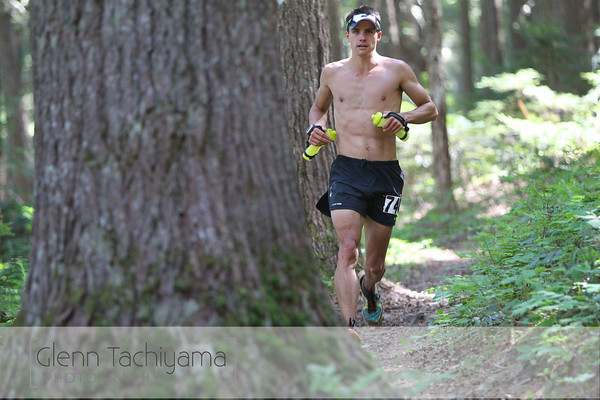

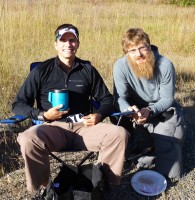









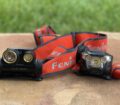
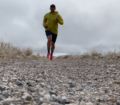


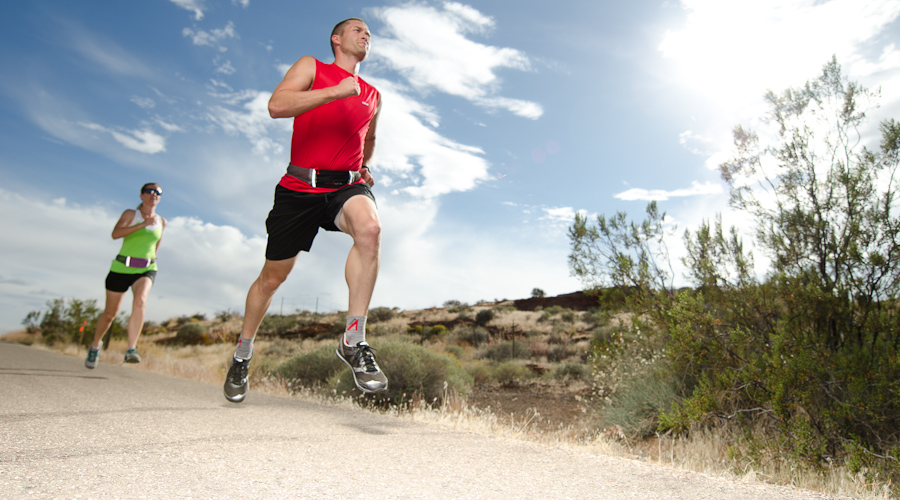
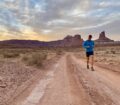
Awesome article. Loved every minute of it. This guy is amazing!
[…] Sprain, and the Finish…and The Interview – a Divine trifecta. A week after Waldo I interviewed the race director of the IMTUF 100, Jeremy Humphrey, who had just won Cascade Crest. He talked about the Spirit and about performing your best to honor […]